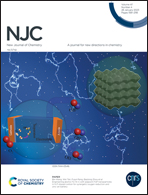Defect-induced zero thermal quenching of a bright red-emitting nonlinear optical material
Abstract
Red phosphors often play a crucial role in enhancing the lighting quality of WLEDs. However, it remains difficult to develop a red phosphor that shows high efficiency, outstanding thermal stability, and high color purity. The struggle against “thermal stability” is always an inevitable task for photoluminescent materials. In this work, we propose a method inspired by nonlinear optical materials to synthesize a novel red-emitting pyrophosphate phosphor Cs2MgZn2(P2O7)2:Eu3+. The phase purity and morphology features are clearly investigated using X-ray diffraction and scanning electron microscopy. The emission spectra show that Cs2MgZn2(P2O7)2:20%Eu3+ can emit bright red light with a high color purity (84.68%) under ultraviolet light excitation. Rietveld refinement of the XRD pattern and luminescence kinetics as a function of the Eu3+ doping concentration were used to obtain information about the crystal structure and determine the Eu3+ site occupation preference. In particular, the sample exhibited excellent thermal stability (100%@170 °C) due to zero thermal quenching behavior, and the mechanism is described in detail. The present work provides a new possibility for the research and application of zero-thermal quenching phosphors. In addition, the fabricated WLED device was characterized via its satisfactory CIE coordinates (0.3508, 0.3233), outstanding correlated color temperature (CCT = 4608 K) and strong emission intensity, which demonstrates its potential for application in the field of WLED solid-state lighting.



 Please wait while we load your content...
Please wait while we load your content...